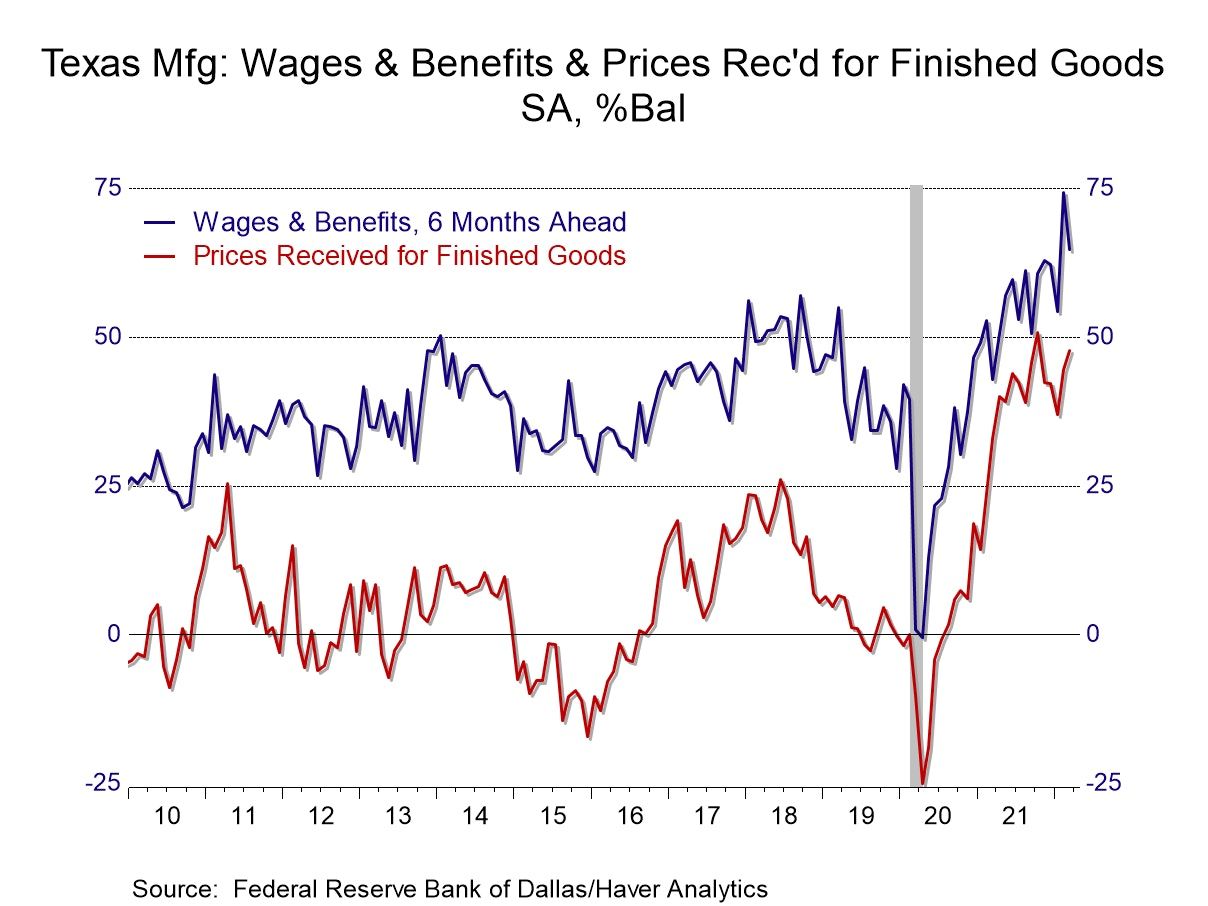Texas Manufacturing Activity & Outlook Weaken in March
by:Tom Moeller
|in:Economy in Brief
Summary
- Production & shipments growth falls sharply.
- New orders growth and employment improve.
- Prices received & wages strengthen.


Manufacturing activity in Texas improved at a slower pace in March, according to the Texas Manufacturing Outlook Survey conducted by the Federal Reserve Bank of Dallas. The general business activity index fell to 8.7 this month from February's 14.0. It had risen from 2.0 in January. A lessened 17.5% of respondents reported improved business activity in March, down from February's 22.3%. An increased 8.8% of respondents reported a worsening of business conditions versus 8.3% in February. The company outlook index weakened to -0.7 this month from 6.4 in February. Data were collected between March 15-23 from 89 manufacturers.
The production index fell to 13.2 in March from 14.5 in February. The shipments reading, however, fell precipitously to 7.0 from 23.5 in February. Offsetting this decline, the growth rate of new orders improved to 13.7 from 12.6. The unfilled orders index rose to 12.4 from 7.7 in February.
Labor market activity exhibited strength as the employment reading strengthened to 25.5 from 18.4 while wages rose to 55.2, a record for the series which dates back to June 2004.
The index for prices received for finished goods rose to 47.8 in March, the highest level since October of last year. The latest reading reflected a slightly lessened 49.0% of respondents reporting price gains and a lessened 1.2% reporting price declines. The index of prices paid for raw materials rose to 74.0 from 63.4 but remained below November’s record high of 83.3.
The future general business activity index fell sharply to 8.2 in March from 20.6 in February. It was the lowest reading since March 2020. Expected production, employment and wages & benefits each fell. The expected growth rate for new orders improved, along with expected delivery times and unfilled orders.
Each index is calculated by subtracting the percentage reporting a decrease from the percentage reporting an increase. When all firms report rising activity, an index will register 100. An index will register -100 when all firms report a decrease. An index will be zero when the number of firms reporting an increase equals the number reporting a decrease. Data for the Texas Manufacturing Outlook can be found in Haver's SURVEYS database.


Tom Moeller
AuthorMore in Author Profile »Prior to joining Haver Analytics in 2000, Mr. Moeller worked as the Economist at Chancellor Capital Management from 1985 to 1999. There, he developed comprehensive economic forecasts and interpreted economic data for equity and fixed income portfolio managers. Also at Chancellor, Mr. Moeller worked as an equity analyst and was responsible for researching and rating companies in the economically sensitive automobile and housing industries for investment in Chancellor’s equity portfolio. Prior to joining Chancellor, Mr. Moeller was an Economist at Citibank from 1979 to 1984. He also analyzed pricing behavior in the metals industry for the Council on Wage and Price Stability in Washington, D.C. In 1999, Mr. Moeller received the award for most accurate forecast from the Forecasters' Club of New York. From 1990 to 1992 he was President of the New York Association for Business Economists. Mr. Moeller earned an M.B.A. in Finance from Fordham University, where he graduated in 1987. He holds a Bachelor of Arts in Economics from George Washington University.





 Global
Global
